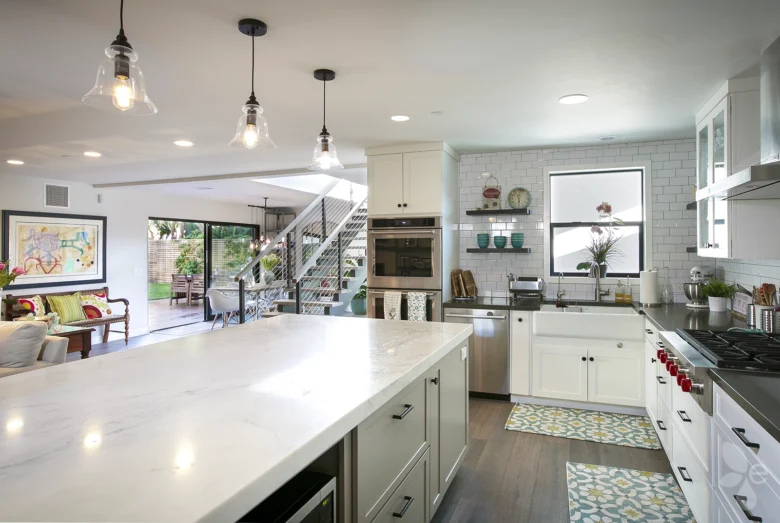When exploring options on how to improve your current home, you may have an opportunity to add what is known as a backyard mother-in-law suite. It goes by many names, though, so you may have also heard it referred to as an accessory dwelling unit, a guest house, a secondary suite, a home addition, or, simply, an in-law suite. Regardless of which term you prefer, adding an in-law suite to your property is an intriguing proposition.
In this article:
- What is an In-Law Suite?
- What Are the Uses of an In-Law Suite?
- How Does an In-Law Suite Affect Home Value?
- What Are the Other Important Considerations if You Want to Build an In-Law Suite?
What Is an In-Law Suite?
In-law suites are additional spaces that can either be attached to the main home or set up separately to serve as a secondary dwelling on a property. You can think of it as a souped-up shed, except that it’s supposed to host people instead of tools. It’s worth pointing out that you don’t need to build the home addition from scratch. In some cases, homeowners may prefer to convert already existing rooms into in-law apartments. These separate units feature some basic amenities.
More often than not, these dwelling units will at least feature a bedroom and a bathroom while sometimes also featuring a full bath or office space (for everyday use). Some homeowners may go all out, adding a kitchen and full living area to give guests more independence.
What Are the Uses of an In-Law Suite?
The name already gives it away. The main purpose of an in-law suite is to serve as a home for additional family, whether your visitors are in-laws or not. Use it as a guest house that can host your friends if you don’t want them making a long drive home. Alternatively, you can begin renting out your home to tenants, taking advantage of the extra building.
A home addition is also great to have on your property if you’re making renovations to your primary residence. Instead of having to temporarily live out of a hotel or rental property, you can stay in the suite while the contractors finish the remaining house plans.
How Does an In-Law Suite Affect Home Value?
The biggest benefit that can come from introducing an additional living space to your already existing property is that you can accommodate more people. Providing comfortable living quarters for more of your loved ones is truly gratifying. However, an in-law suite can do more than increase the hosting capacity of your property. An underrated benefit of moving forward with a home addition is that it boosts the value of your property significantly.
How much of a boost to home value does an in-law suite provide? A survey conducted by the National Association of Realtors found that an in-law suite and a finished basement are the two elements that most buyers are willing to pay extra for. When it comes to home additions, a third of the respondents said that they would be willing to pay extra if it meant that the property they were purchasing came with an in-law suite.
Generally speaking, an in-law suite should turn out to be a positive addition to your property because additional, functional square footage is the primary factor in home valuation.
What Are the Other Important Considerations if You Want to Build an In-Law Suite?
Beyond securing the room and the funding you need to complete your project, there are other factors you need to consider before getting started.
The Laws in Your Area
Southern Californians need to determine if their project is legal. In some areas, zoning laws may forbid you from building an addition on your property. There are also cases where your city allows an addition, but there may be limitations on how big it can be and what it can feature. Some may allow you to build additions with no restrictions as long as you do not use them as rental properties. Eco Minded Solutions guides our clients through the permitting process which can save them time and money.
The Reaction of Your Neighbors
Prior to moving forward with your project, it may be a good idea to ask your neighbors what they think. Getting on the same page with your neighbors is especially important if you want to rent out the secondary suite as they can either make it easier or harder for you to attract tenants.
The Design of the Home Addition
Lastly, homeowners need to be thoughtful when it comes to designing their home addition, especially if you are going to offer it to your older relatives. Installing guardrails that will prevent falls and other safety features are important considerations. Thinking long and hard about the use of your home addition is quintessential to the success of the design.


